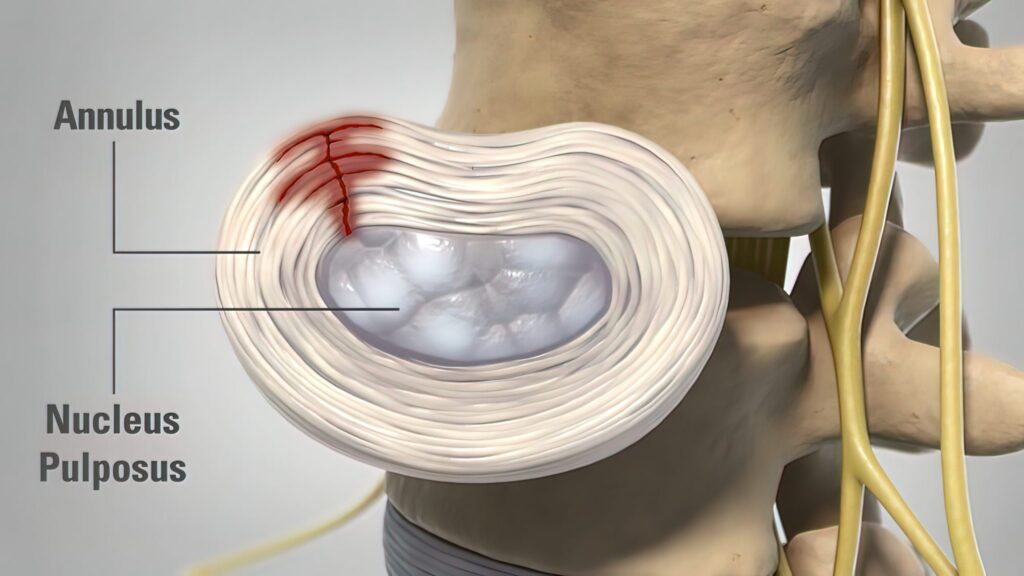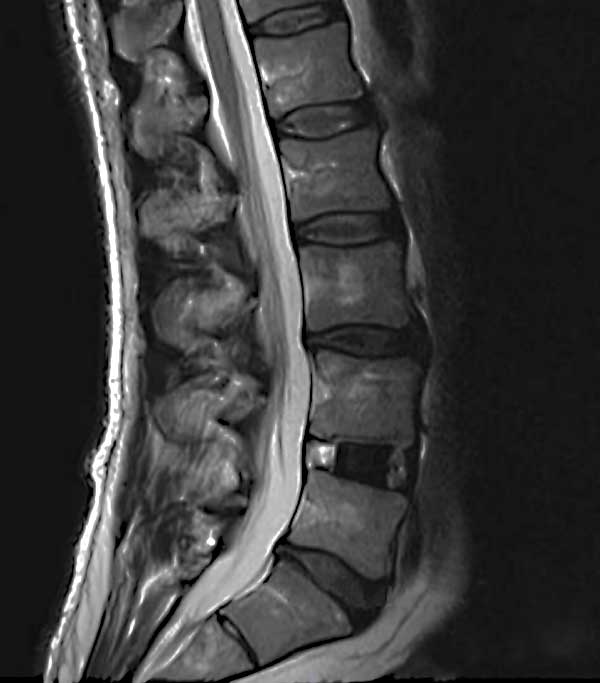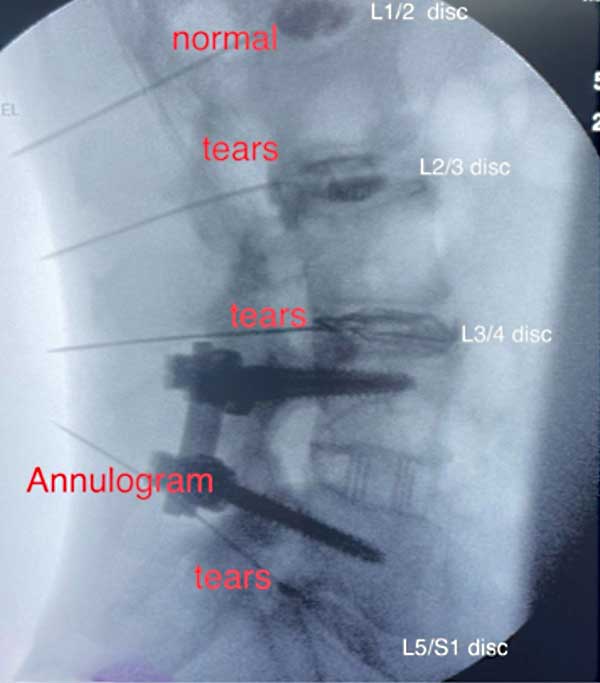Common Cause of Pain and Symptoms in Your Back
Slipped Discs, Bulging Discs, Herniated Discs, Pinched Nerves
In this video, you will see a leaky disc and how this causes pain.
WATCH VIDEO (27 seconds)
Leaky discs cause pain. Understanding the anatomy of the spinal disc helps explain why.
The outer annulus fibrosus and the inner nucleus pulposus. The annulus fibrosus is a series of overlapping fibrous collagen rings that surround the gel-like structure of the nucleus pulposus. Spinal discs provide flexibility to the vertebral column and absorb shock from movement that places stress on the spine.
How does a spinal disc become leaky?
Unfortunately, many cases remain improperly diagnosed because the connection between back pain and annular tears has only recently begun to be fully recognized within the medical community.

LEAKY DISC: This happens when the gel-like substance from the inner nucleus pulposus (grey area) leaks through an annular tear onto a spinal nerve, causing pain.
A major cause of back pain:
Studies suggest that annular tears and subsequent leakage of the nucleus pulposus may be responsible for a significant number of back and leg pain-related conditions.
Neurological symptoms:
The leaking disc material can irritate or compress nearby nerves, causing symptoms such as numbness, tingling, muscle weakness, sciatica.
Leaky Disc Syndrome is often misdiagnosed or overlooked, as traditional imaging techniques like MRI are not designed to identify annular tears. Specialized imaging like the Annulargram™ may be necessary for accurate diagnosis.


MRI is a medical imaging technique designed to generate images of organs. Because of this, it is not precise enough to identify Leaky Disc Syndrome in spinal discs.
The Annulargram is a pain-free test performed during the DISCSEEL Procedure that identifies even the most subtle tears in spinal discs that MRI or discography can’t. We test every disc in the region, allowing our team to be proactive in addressing small tears before they lead to large herniations, degeneration, and other painful conditions.
Getting the diagnosis right with an Annulargram™
Research has proven that the Fibrin used in the DISCSEEL Procedure seals annular tears while encouraging new tissue to grow, providing lasting healing and relief from neck and back pain.
The DISCSEEL Procedure is a minimally invasive and non-surgical outpatient procedure that has changed the lives of thousands of patients and allowed them to get back to doing what they love. Because this procedure facilitates the healing of damaged spinal discs, it does not affect patient mobility once the healing process is complete.
The DISCSEEL Procedure is evidence based and backed by scientific studies.
Why it’s Better: Fibrin
What This Means for You
Interested in the science?